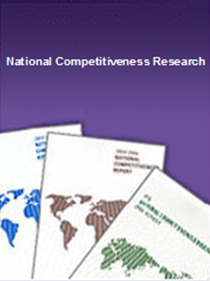
One of the most effective approaches toward understanding competitiveness is Porter’s (1990) Diamond Model (Moon, 2018). This was then extended by later scholars into two directions. One is the Double Diamond Model (Rugman and D'Cruz, 1993; Moon, Rugman, and Verbeke, 1995, 1998), which extends the scope of national competitiveness including both domestic and international dimensions. The other is the 9-Factor Model (Cho, 1994), which distinguishes the sources of national competitiveness to include both physical and human factors.
Based on these two extensions, a new comprehensive model was introduced by integrating them into one framework (Cho and Moon, 2013a, 2013b; Cho, Moon, and Kim, 2008, 2009; Cho, Moon, and Yin, 2016). The new model was named as the Double Diamond (DD)-Based 9-Factor Model, which is the underlying analytical framework of our National Competitiveness Research. For this survey, we measure the competitiveness of more than 60 countries and regions using the DD-Based 9-Factor Model. The scope of national competitiveness encompasses both domestic and international contexts, and the source of national competitiveness is composed of both physical and human factors. Physical factors include four elements, consisting of Factor Conditions, Demand Conditions, Related Industries, and Business Context, while human factors include four other elements – Workers, Politicians & Bureaucrats, Entrepreneurs, and Professionals (see figure 1). The eight factors of national competitiveness in the DD-Based 9-Factor Model are composed of 16 sub-factors, which are further made up of 104 criteria. About half (63) of the criteria are hard data, and the other half (41) are soft data conducted in this research.

This report consists of a series of tools for analyzing national competitiveness. The methodology collectively known as Measure-Analyze-Simulate-Implement (MASI) is foundationally applied in the NCR to address the policy implications for enhancing national competitiveness. The MASI approach includes the following four steps:


We have been publishing the National Competitiveness Research annually since 2001. The research introduces a theoretical background on national competitiveness and provides the indexes for more than 60 countries and regions around the world. Alongside this, it provides policy recommendations for governments that can help enhance competitiveness at the national level as well as support companies to formulate their international strategies. Please explore our past competitive rankings and the User Guide below.
This survey contains 41 questions which are divided into seven categories.
For those who complete the survey, the following benefits will be available.